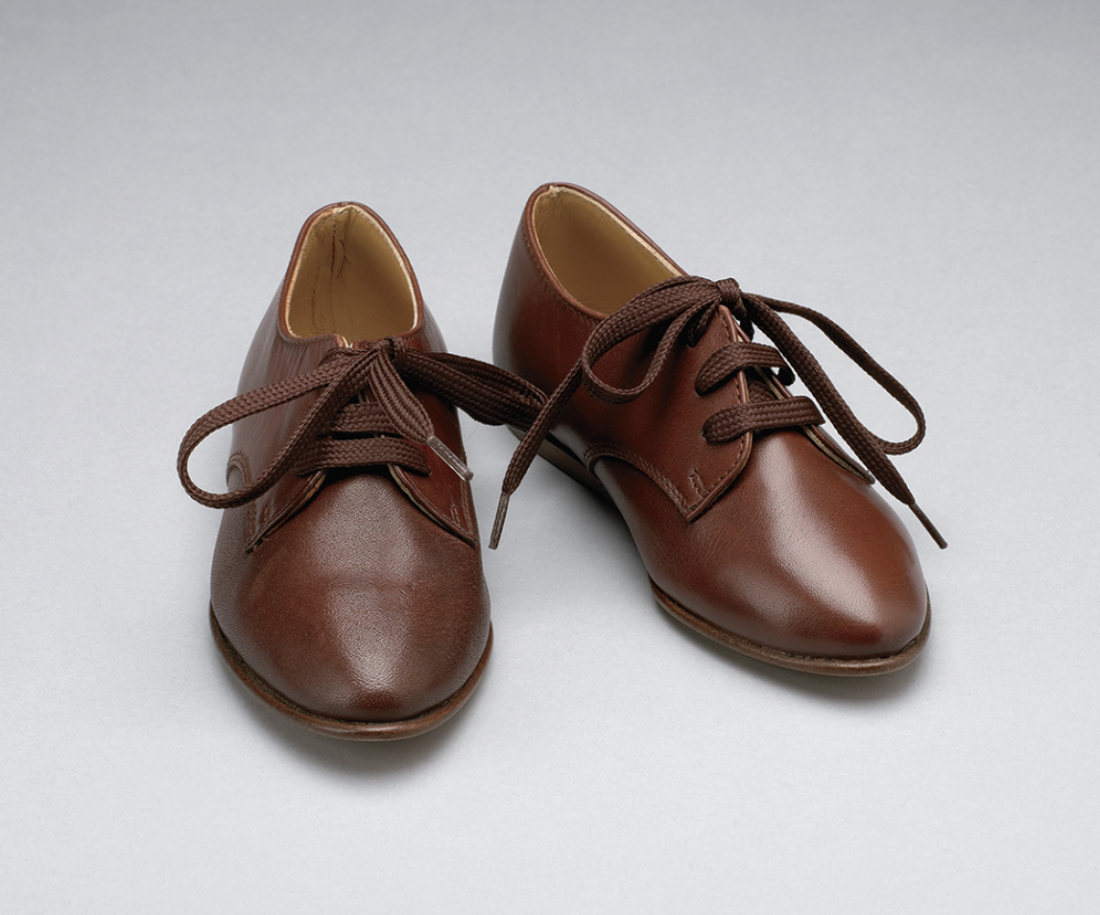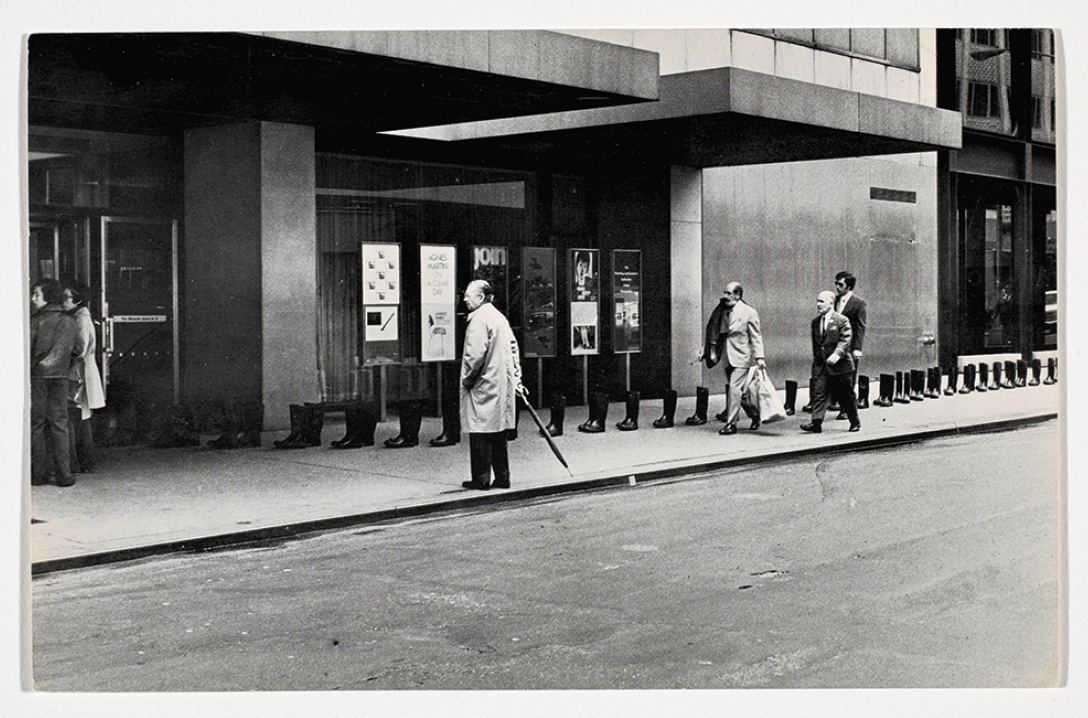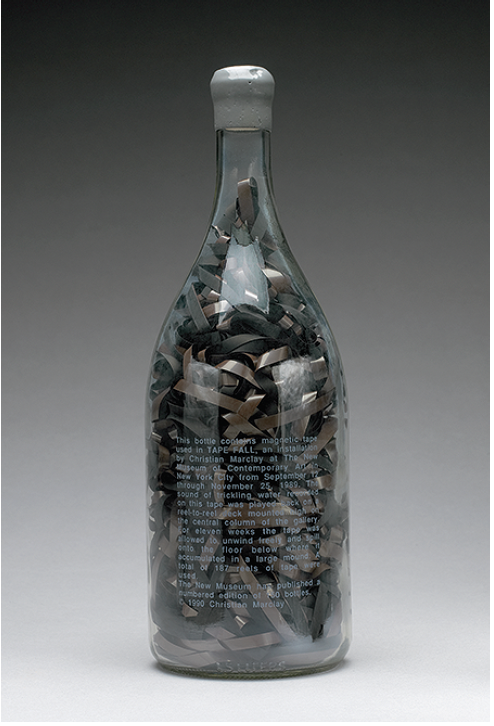“Art Metropole: The Top 100”
In 1974, the artists collective General Idea established Art Metropole as a business venture and an archive for artists’ books, videos, multiples, photographs and other products stemming from what they called “the ephemeral flood.” AA Bronson, Jorge Zontal and Felix Partz (born Michael Tims, Slobodan Saia-Levy and Ron Gabe, respectively) formed General Idea in Toronto around 1968. Their gathering of material that would eventually form Art Metropole’s archives began in 1969. For the next 20 years, the archives served as a source of inspiration for the group, as well as a vehicle through which they established personal and professional connections with other artists.

Sherrie Levine, 2 Shoes, 1992. Library and Archives, National Gallery of Canada, Ottawa. Art Metropole Collection, Gift of Jay A Smith, Toronto, 1999. Photo © National Gallery of Canada.
It is fitting that the National Gallery of Canada, to which the archives were donated in 1999, would compile a touring exhibition of 100 items from the 13,000-piece collection just as Art Metropole is set to celebrate its 35th anniversary. Organizers Kitty Scott, formerly Curator of Contemporary Art, and Jonathan Shaughnessy, Assistant Curator of Contemporary Art, at the National Gallery selected an eclectic mix of treasures produced by an international roster of artists who were the vanguard of the Fluxus, Minimalist, Pop, Conceptual and Performance Art movements. Among them, and to name just a few: John Baldessari, Michael Snow, Yoko Ono, Eleanor Antin, George Maciunas, Marcel Broodthaers, Jeff Wall, Gordon Matta-Clark, Sherrie Levine, Claes Oldenburg, Agnes Martin, Christian Boltanski, Andy Warhol, John Cage, Ed Ruscha, Dara Birnbaum, Hanne Darboven, Rodney Graham and Marina Abramović.

Ken Lum, Ask for Larry Myers, 1990. Library and Archives, National Gallery of Canada, Ottawa. Art Metropole Collection, Gift of Jay A Smith, Toronto, 1999.
If this exhibition is any indication, the archives are an embarrassment of riches. Every object on display is a gem; not surprisingly, several artists represented in the archives feel like direct influences or, at least, kindred spirits. The NE Thing Company, established in 1966 by Iain and Ingrid Baxter, is Art Metropole’s precursor in its “corporate” identity, with the Baxters’ conflation of life, art and business. This same sense of collaboration is evident in the work of Gilbert & George. Like General Idea, the British duo present themselves as a single entity, having even dropped their surnames. Both also share practices that became more sexually and politically charged as they responded to the societal changes taking place around them. This desire to insinuate art into the public realm also links General Idea with Jenny Holzer and, especially, Allan Kaprow, who, as the father of Performance Art in the ’60s, set the stage for the Miss General Idea beauty pageants of the early ’70s. Tracing these threads throughout the archives sheds light on General Idea’s place within the international dialogues about art that arose during their 25-year career.

Eleanor Antin, From the 100 Boots series, 1971–1973. Library and Archives, National Gallery of Canada, Ottawa. Art Metropole Collection, Gift of Jay A Smith, Toronto, 1999.

Christian Marclay, Bottled Water, 1990. Library and Archives, National Gallery of Canada, Ottawa. Art Metropole Collection, Gift of Jay A Smith, Toronto, 1999. Photo © National Gallery of Canada.
General Idea produced over 150 multiples—everything from book works to banners—until the collective ceased following the AIDS-related deaths of Zontal and Partz in 1994. An example of General Idea’s best known image, the brightly-hued AIDS graphic based on American Pop artist Robert Indiana’s LOVE paintings from the 1960s—is included in the exhibition. The AIDS graphic appeared on mass-produced stamps and magazine covers, limited edition t-shirts, scarves and rings, and as a single, large-scale sculpture. Most significantly, it appeared on glossy posters that were seen on city streets and in transit systems throughout North America and Europe. (It also appeared on an electronic billboard in New York’s Times Square.) General Idea’s AIDS projects are arguably their most successful attempt at infiltrating the mass media. Between 1987 and 1992, the AIDS graphics replicating the course of a virus were spread through different communication vehicles to the public.
In his “Sentences on Conceptual Art,” 1969, Sol LeWitt wrote: “For each work of art that becomes physical, there are many variations that do not.” This quote, which viewers could read in the issue of the British journal Art-Language that was on display, felt especially relevant given the nature of the exhibition. Hopefully, the National Gallery will compile another Top 100, which would provide further insight into the work of this collective whose partnership ended much too soon, but whose significance seems to be increasing with time. ❚
“Art Metropole: The Top 100,” curated by Kitty Scott and Jonathan Shaughnessy, is a travelling exhibition organized by the National Gallery of Canada most recently exhibited at the Museum of Contemporary Canadian Art in Toronto from November 15 to December 28, 2008.
Bill Clarke is a visual arts writer who has previously been published in Canadian Art, Magenta and Modern Painters magazines.

